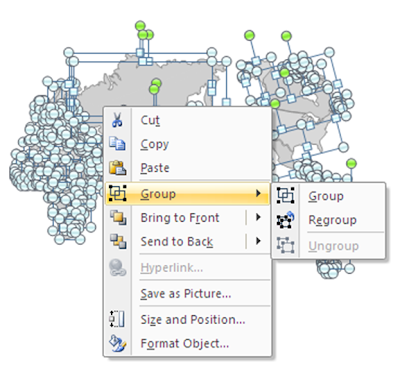Kingsoft Office is very much similar to MS Office and highly compatible. On the surface one will observe very few differences between them. Though there are some key differences between two suites, our key focus lies on understanding how much the shortcuts of the two differ. Today we'll see the differences in the shortcuts of MS Excel and Kingsoft Spreadsheet.
Most of the important shortcuts of MS Excel, that we've discussed in our previous articles, can be used in Kingsoft Spreadsheet as well. However, there are some dissimilarities as given below:
1. Formatting keys don't work in Kingsoft
The formatting keys (Ctrl + Shift + ~/$/3/%/! ), used for changing the given number in different formats like date, currency, percentage etc. doesn't work in Kingsoft spreadsheet. Only CTRL + 1 shortcut can be used to open the dialogue box showing different formats. The user will have to select the appropriate format to get the desired result.
2. No shortcut for Hiding/Unhiding rows and columns
There are no dedicated shortcuts for hiding and unhiding rows or columns in Kingsoft Spreadsheet. This action can be performed by going through the 'Rows & Columns' tab given under Home tab or by selecting a row/column and choosing 'Hide' option after right click.
3. ALT based shortcuts work in little different manner
The ALT based shortcuts in Kingsoft spreadsheet need little explanation as they work in slightly different way from that in MS Excel. Let's understand how
a) A normal Kingsoft spreadsheet looks like this
b) Now when we press ALT on keyboard, a menu emerges which has been highlighted in the red colour. This is similar to appearance of the numbers on the tabs when ALT is pressed in Excel.
c) The user can either press an alphabet key or use arrow keys to open a particular section. For example, upon pressing I, following options appear in front of the user.
Use the arrow keys to select the appropriate option and perform the intended action.
Most of the important shortcuts of MS Excel, that we've discussed in our previous articles, can be used in Kingsoft Spreadsheet as well. However, there are some dissimilarities as given below:
1. Formatting keys don't work in Kingsoft
The formatting keys (Ctrl + Shift + ~/$/3/%/! ), used for changing the given number in different formats like date, currency, percentage etc. doesn't work in Kingsoft spreadsheet. Only CTRL + 1 shortcut can be used to open the dialogue box showing different formats. The user will have to select the appropriate format to get the desired result.
2. No shortcut for Hiding/Unhiding rows and columns
There are no dedicated shortcuts for hiding and unhiding rows or columns in Kingsoft Spreadsheet. This action can be performed by going through the 'Rows & Columns' tab given under Home tab or by selecting a row/column and choosing 'Hide' option after right click.
3. ALT based shortcuts work in little different manner
The ALT based shortcuts in Kingsoft spreadsheet need little explanation as they work in slightly different way from that in MS Excel. Let's understand how
a) A normal Kingsoft spreadsheet looks like this
b) Now when we press ALT on keyboard, a menu emerges which has been highlighted in the red colour. This is similar to appearance of the numbers on the tabs when ALT is pressed in Excel.
c) The user can either press an alphabet key or use arrow keys to open a particular section. For example, upon pressing I, following options appear in front of the user.
Use the arrow keys to select the appropriate option and perform the intended action.



































